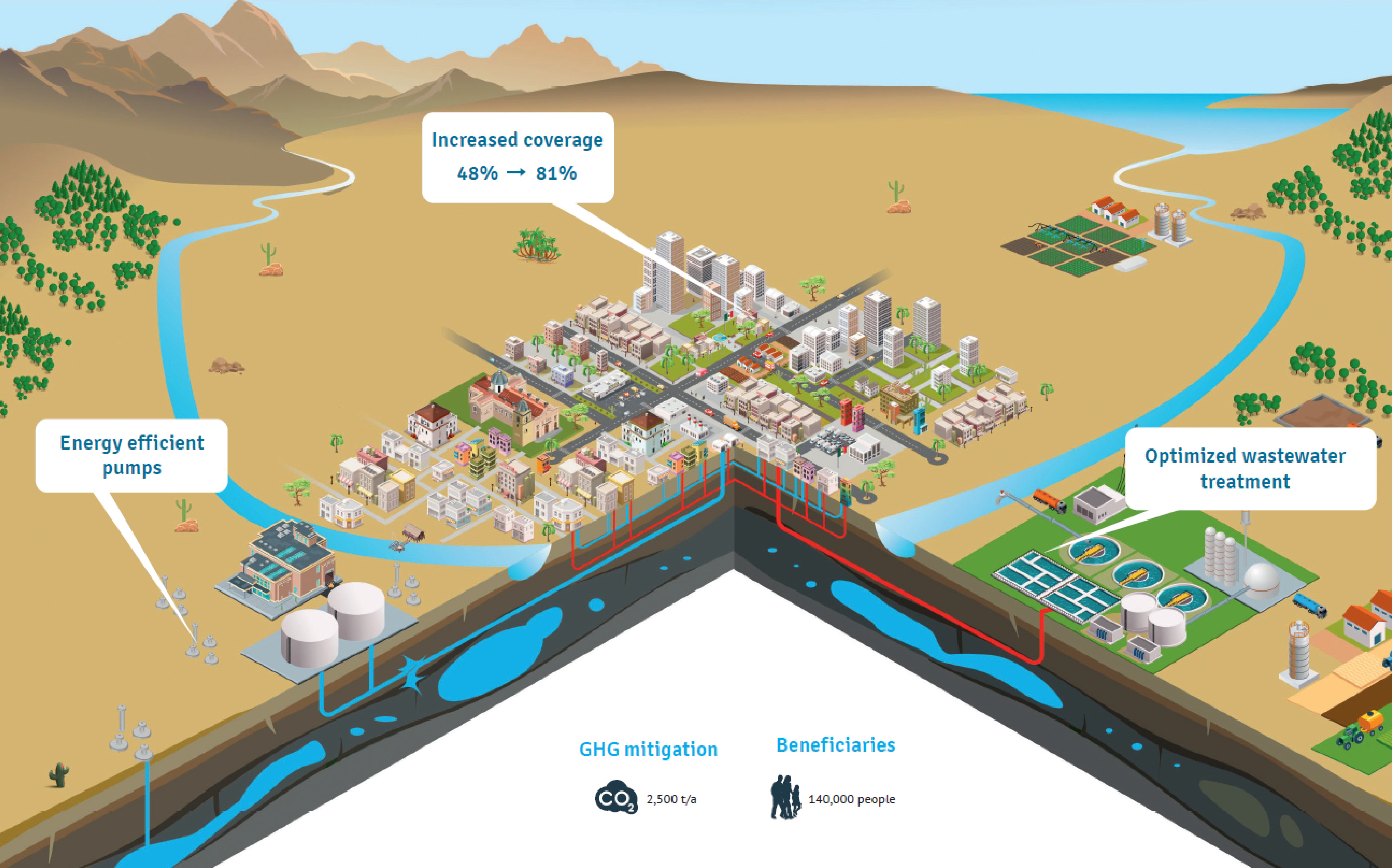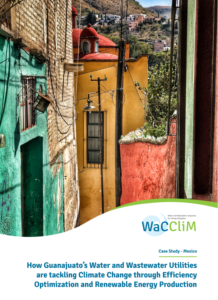
Mexico's National Challenge
Mexico has committed ambitiously to reducing 22% of its greenhouse gas emissions by 2030 compared to business-as-usual scenarios, with the potential to raise the target up to 40%, and 50% by 2050 compared to the year 2000.
Mexico was a leader in the negotiation of the Paris Agreement; it has committed ambitiously to reducing22% of its GHG emissions by 2030 compared to baseline scenario, and raised the potential to push the target to 40%. Mexican water utilities will need to contribute to this reduction, but they already face a difficult task in meeting users’ demands. Low tariffs, high water consumption and a complicated legal framework have led to unsustainable water abstraction, high energy costs, water losses and inadequate wastewater treatment, which contribute to high emissions and make communities more vulnerable to climate risks.
WaCCliM in Mexico
The WaCCliM project is working with the National Water Commission (CONAGUA), the Ministry of Environment and Natural Resources (SEMARNAT) and the National Water Association of Mexico (ANEAS). These partners have participated in the dissemination of the low-carbon approach in the water sector, including through network meetings of utilities and the development of standards for biogas and energy generation projects.

CO2 reduction and beneficiaries through implemented measures in San Francisco del Rincón, Mexico. Illustration: © WaCCliM
WaCCliM Partner Utilities
Two pilot utilities in the city of San Francisco del Rincón are paving the way to sustainable, low-carbon urban water management. SAPAF provides water supply services, while SITRATA operates a wastewater treatment plant shared between two municipalities, San Francisco del Rincón and La Purísima. The raw water comes from groundwater wells and requires only disinfection. The drainage network does not require any pumping. The wastewater treatment plant is based on an activated sludge system.
Currently, they are avoiding emissions of 2,500 t CO2e per year, comparable to planting 12,400 trees annually. Most significantly, they have achieved this by expanding wastewater treatment coverage from less than half of the city to more than 80%. The partners are now investigating further measures to reduce emissions and operational costs and increase resilience to climate risks in the city’s water supply and wastewater system.

